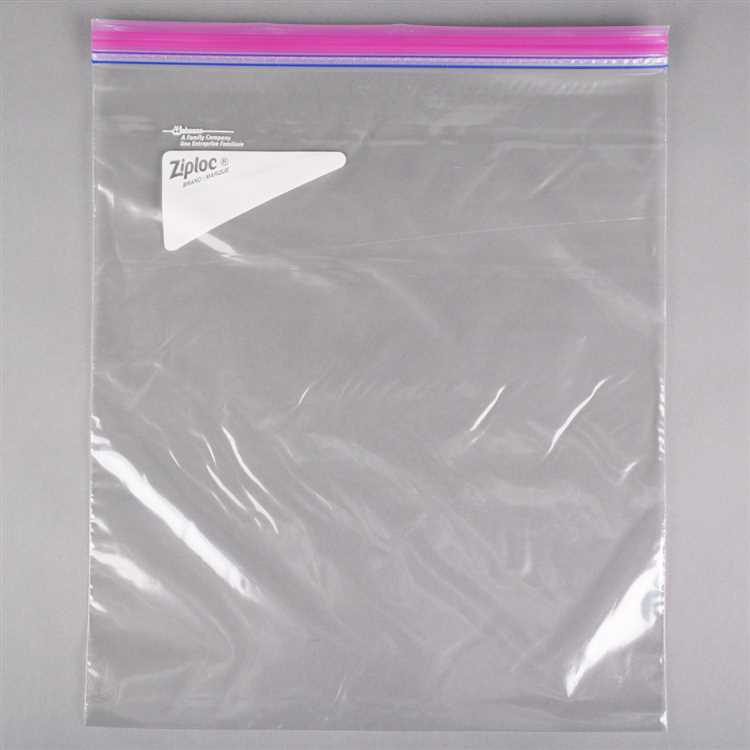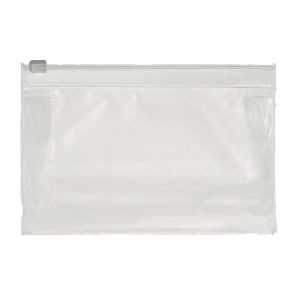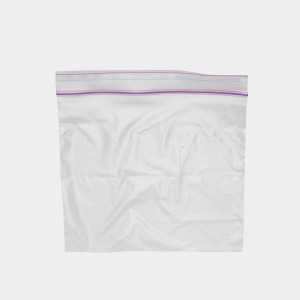
Ziploc bags are a popular type of resealable plastic bags that have become a common household item. They are known for their versatility, convenience, and ability to keep food fresh.
When it comes to determining the plastic number of Ziploc bags, it can vary depending on the specific type and brand. Plastic products are typically marked with a resin identification code, also known as a plastic number, which helps identify the type of plastic used in the manufacturing process.
Most Ziploc bags are made from a type of plastic known as low-density polyethylene (LDPE), which is usually labeled with the plastic number 4. LDPE is a highly flexible and lightweight plastic that is resistant to moisture and chemicals, making it suitable for various applications, including food storage.
However, it is important to note that not all Ziploc bags are made from LDPE. Some varieties may be made from different plastics, such as high-density polyethylene (HDPE) or polypropylene (PP), which are commonly labeled with plastic numbers 2 or 5, respectively. It is recommended to check the packaging or contact the manufacturer to determine the exact plastic number for a specific type of Ziploc bag.
- Understanding the plastic number classification system
- What are plastic numbers?
- What plastic number is Ziploc bags?
- Why knowing the plastic number of Ziploc bags is important
- 1. Recycling
- 2. Safety
- Identifying the plastic number of Ziploc bags
- Why is the plastic number important?
- How to locate the plastic number on Ziploc bags?
- Recycling options for Ziploc bags with different plastic numbers
- Alternatives to Ziploc bags with specific plastic numbers
- Maintaining sustainability with Ziploc bags
- Q&A:
- What plastic number are Ziploc bags made of?
- Can Ziploc bags be recycled?
- Are Ziploc bags safe for food storage?
- How long do Ziploc bags take to decompose?
- Can you use Ziploc bags for sous vide cooking?
- What is the plastic number of Ziploc bags?
Understanding the plastic number classification system
The plastic number classification system is a way to identify and categorize different types of plastic based on their chemical makeup. It was developed by the Society of the Plastics Industry (SPI) in 1988 and is widely used by manufacturers, recyclers, and consumers to understand and manage the recycling and disposal of plastic products.
What are plastic numbers?
Plastic numbers, also known as resin identification codes, are symbols that indicate the type of plastic used in a product. These numbers are typically found inside a chasing arrow symbol, which is often referred to as the recycling symbol.
There are seven different plastic numbers, ranging from 1 to 7, each representing a different type of plastic. These numbers are as follows:
| Plastic Number | Type of Plastic |
|---|---|
| 1 | Polyethylene Terephthalate (PET or PETE) |
| 2 | High-Density Polyethylene (HDPE) |
| 3 | Polyvinyl Chloride (PVC) |
| 4 | Low-Density Polyethylene (LDPE) |
| 5 | Polypropylene (PP) |
| 6 | Polystyrene (PS) |
| 7 | Other Plastics, including Polycarbonate (PC) and Acrylonitrile Butadiene Styrene (ABS) |
What plastic number is Ziploc bags?
Ziploc bags, which are commonly used for storing food and other items, are typically made from low-density polyethylene (LDPE). LDPE is represented by plastic number 4. Therefore, Ziploc bags can be identified by the plastic number 4 and should be recycled accordingly.
It’s important to note that not all plastic products are recyclable, even if they have a plastic number. The recyclability of a plastic item depends on various factors, including its composition and local recycling facilities. It’s always best to check with your local recycling program to determine if Ziploc bags or any other specific plastics are accepted for recycling in your area.
Why knowing the plastic number of Ziploc bags is important
Ziploc bags are a popular choice for storing and organizing various items. These bags are made of different types of plastic, and it is important to know the plastic number of Ziploc bags for several reasons.
1. Recycling
Knowing the plastic number of Ziploc bags is crucial for proper recycling. Different types of plastic have different recycling processes, and not all plastics are accepted by recycling facilities. By knowing the plastic number, you can ensure that your Ziploc bags are recycled in the appropriate manner, helping to reduce waste and protect the environment.
2. Safety

The plastic number of Ziploc bags can provide important information about their safety. Some plastics contain harmful chemicals, such as BPA, which can leach into food and pose health risks. By knowing the plastic number, you can make informed choices about the types of bags you use for storing food and other sensitive items.
It is important to note that Ziploc bags are labeled with a recycling symbol and a number on the bottom. This number corresponds to the plastic resin used in the bag’s manufacturing.
Overall, knowing the plastic number of Ziploc bags is essential for proper recycling and ensuring the safety of the items stored in them. By being aware of the plastic number, you can make environmentally-friendly choices and protect yourself and your loved ones from potential health risks.
Identifying the plastic number of Ziploc bags
Ziploc bags are a popular choice for storing and organizing various items. These plastic bags are known for their durability and resealable feature, which makes them versatile and convenient to use.
When it comes to identifying the plastic number of Ziploc bags, a common question that arises is: What plastic number are Ziploc bags made of?
Ziploc bags are commonly made of low-density polyethylene (LDPE), which is a type of plastic that falls under plastic number 4. This plastic is known for its flexibility and resistance to moisture, making it ideal for storing both wet and dry items.
Why is the plastic number important?
The plastic number serves as an identification code that helps identify the type of plastic used in a particular product. It is represented by a triangular recycling symbol with a number inside. This number is crucial because it determines how the plastic can be recycled and what products it can be made into.
Identifying the plastic number of Ziploc bags is important because it allows users to know if the bags are recyclable or not. In the case of Ziploc bags, LDPE falls under plastic number 4, which means these bags can be recycled through some curbside recycling programs or special drop-off locations.
How to locate the plastic number on Ziploc bags?
To find the plastic number on Ziploc bags, you can look for the recycling symbol usually imprinted on the bottom of the bag. Inside the symbol, you will find a number in the center, which indicates the plastic type. In the case of Ziploc bags, you should look for the number 4 inside the recycling symbol.
It is worth noting that not all Ziploc bags may have the plastic number indicated on them. In such cases, it is safest to assume that they fall under the plastic number 4, as this is the most commonly used plastic type for Ziploc bags.
Knowing the plastic number of Ziploc bags can help users make informed decisions when it comes to recycling and proper disposal. By understanding the plastic type, users can contribute to reducing plastic waste and promoting a more sustainable environment.
Recycling options for Ziploc bags with different plastic numbers

Ziploc bags are a popular choice for food storage and other household uses due to their convenience and versatility. However, when it comes to recycling, it’s important to know the plastic number of the Ziploc bags you have as different plastic numbers have different recycling options.
Ziploc bags are usually made from either low-density polyethylene (LDPE) or high-density polyethylene (HDPE). LDPE is typically used for general-purpose bags, while HDPE is used for freezer bags. Both LDPE and HDPE are recyclable, but it’s essential to check the plastic number to determine the best recycling option.
Recycling options for Ziploc bags with plastic number 4 (LDPE):
1. Drop-off recycling programs: Many local recycling centers accept LDPE plastic, including Ziploc bags with the plastic number 4. You can check your local recycling center’s guidelines to ensure that they accept Ziploc bags with this plastic number.
2. Grocery store drop-off: Some grocery stores have drop-off bins for recycling LDPE plastic bags. You can bring your used Ziploc bags to these designated bins for recycling.
3. Mail-in recycling programs: There are also mail-in recycling programs available for LDPE plastic. You can search online for organizations that accept LDPE plastic and provide mailing instructions for recycling Ziploc bags with this plastic number.
Recycling options for Ziploc bags with plastic number 2 (HDPE):
1. Local recycling programs: Many municipal recycling programs accept HDPE plastic, so you can include Ziploc bags with this plastic number in your regular recycling bin.
2. Drop-off recycling centers: Some recycling centers have separate bins specifically for HDPE plastic. If your local recycling center offers this option, you can drop off your used Ziploc bags with plastic number 2 in these bins.
3. Reuse: While recycling is always the preferred option, HDPE plastic can also be reused. Clean your Ziploc bags thoroughly and reuse them for storage or other purposes before disposing of them.
Remember that it’s essential to clean your Ziploc bags before recycling them. Remove any food residue and allow them to dry before recycling or reusing. By properly recycling your Ziploc bags with the appropriate plastic number, you can contribute to a more sustainable and eco-friendly future.
Alternatives to Ziploc bags with specific plastic numbers
Ziploc bags are typically made from low-density polyethylene (Plastic #4). However, if you are looking for alternatives to Ziploc bags with specific plastic numbers, consider the following options:
- Plastic #1: PET or PETE (polyethylene terephthalate) – Consider using PET or PETE bottles or containers as an alternative to Ziploc bags. These are commonly used for beverages, food packaging, and personal care products. They are lightweight, durable, and easily recyclable.
- Plastic #2: HDPE (high-density polyethylene) – Look for HDPE containers or bags as an alternative to Ziploc bags. HDPE is commonly used for milk jugs, shampoo bottles, and other household items. It is known for its strength, durability, and resistance to chemicals.
- Plastic #5: PP (polypropylene) – Consider using PP containers or bags as an alternative to Ziploc bags. PP is commonly used for yogurt containers, margarine tubs, and other food packaging items. It is known for its resistance to heat and chemicals.
- Reusable silicone bags: Silicone bags are a popular alternative to plastic bags. They are made from food-grade silicone, which is a durable and non-toxic material. Silicone bags can be used for storing food, liquids, and other items, and they are reusable, dishwasher safe, and freezer safe.
- Beeswax wraps: Beeswax wraps are a sustainable alternative to plastic bags. They are made from cotton fabric coated with beeswax, jojoba oil, and tree resin. Beeswax wraps can be used to wrap food, cover bowls, and keep food fresh. They are reusable, biodegradable, and compostable.
Remember to choose alternatives that align with your specific needs and preferences. By opting for these alternatives, you can reduce your plastic waste and contribute to a more sustainable future.
Maintaining sustainability with Ziploc bags
Ziploc bags are not only a useful tool for keeping food fresh and organized, but they also contribute to maintaining sustainability in several ways.
First and foremost, Ziploc bags are reusable. Unlike other plastic bags that are often used once and then thrown away, Ziploc bags can be washed and reused multiple times. This not only reduces waste but also helps to save money and resources in the long run.
Furthermore, Ziploc bags are made from a plastic material known as polyethylene, which is a recyclable plastic. This means that when a Ziploc bag has reached the end of its useful life, it can be properly recycled and turned into new products. By participating in plastic recycling programs, consumers can ensure that Ziploc bags are diverted from landfill and given a new lease on life.
Additionally, Ziploc bags are airtight and watertight, which helps to extend the shelf life of food. By using Ziploc bags to store leftovers or bulk food items, consumers can reduce food waste and save money. This is especially important considering the significant amount of energy and resources that go into food production. By preventing food from spoiling prematurely, Ziploc bags contribute to a more sustainable food system.
Furthermore, Ziploc bags come in various sizes, which allows for portion control and helps to reduce food waste. By properly portioning out food and storing it in Ziploc bags, consumers can avoid overeating and ensure that perishable items are not wasted.
In conclusion, Ziploc bags are a versatile and sustainable solution for keeping food fresh and organized. By using and reusing Ziploc bags, recycling them when they can no longer be used, and utilizing their airtight and watertight properties, consumers can play a role in maintaining sustainability in their daily lives.
Q&A:
What plastic number are Ziploc bags made of?
Ziploc bags are typically made from low-density polyethylene (LDPE), which is labeled as plastic number 4.
Can Ziploc bags be recycled?
Yes, many recycling centers accept Ziploc bags for recycling, although it’s important to check with your local facility to ensure they accept this type of plastic.
Are Ziploc bags safe for food storage?
Yes, Ziploc bags are considered safe for food storage. They are made from food-grade plastic and are designed to be freezer-safe, microwave-safe, and leak-proof.
How long do Ziploc bags take to decompose?
Ziploc bags are not biodegradable and can take hundreds of years to decompose in a landfill environment. It is recommended to reuse or recycle them whenever possible.
Can you use Ziploc bags for sous vide cooking?
Yes, Ziploc bags can be used for sous vide cooking. However, it is important to ensure that the bags are BPA-free and can withstand the cooking temperature without leaching harmful chemicals into the food.
What is the plastic number of Ziploc bags?
Ziploc bags are made from plastic number 4, also known as low-density polyethylene (LDPE).